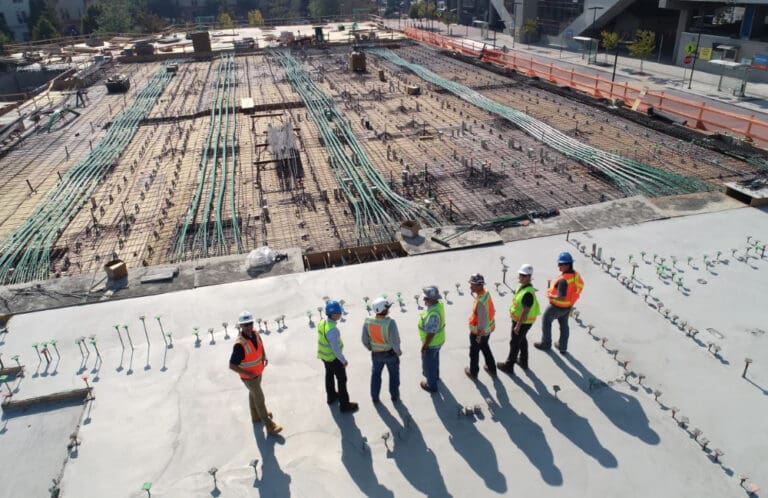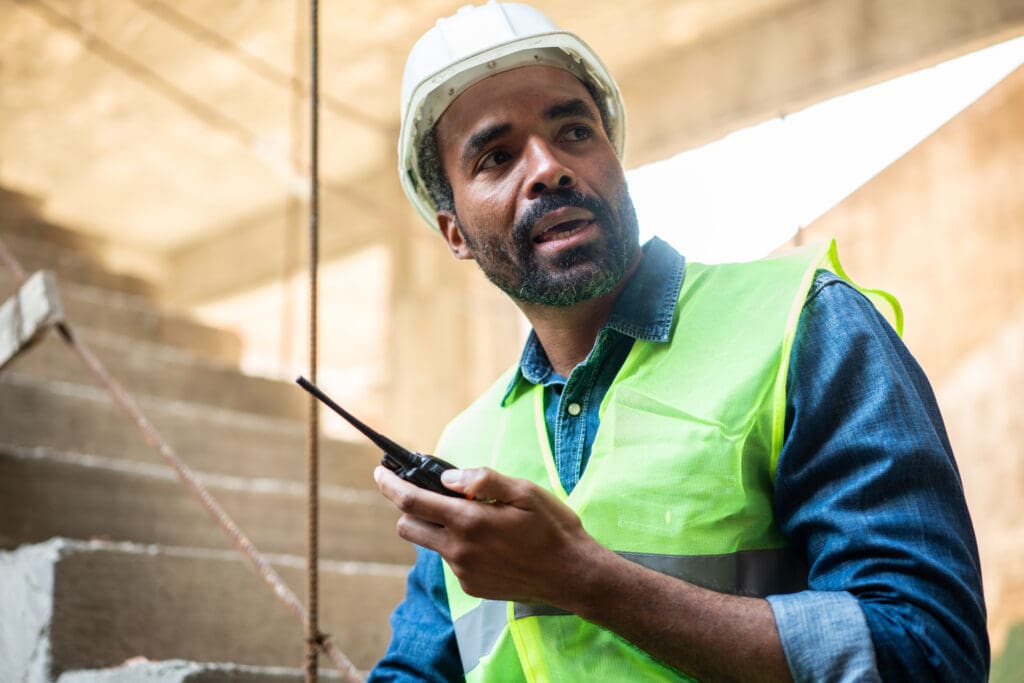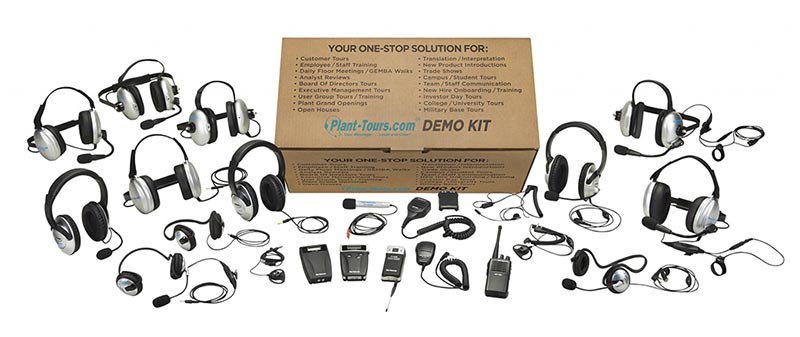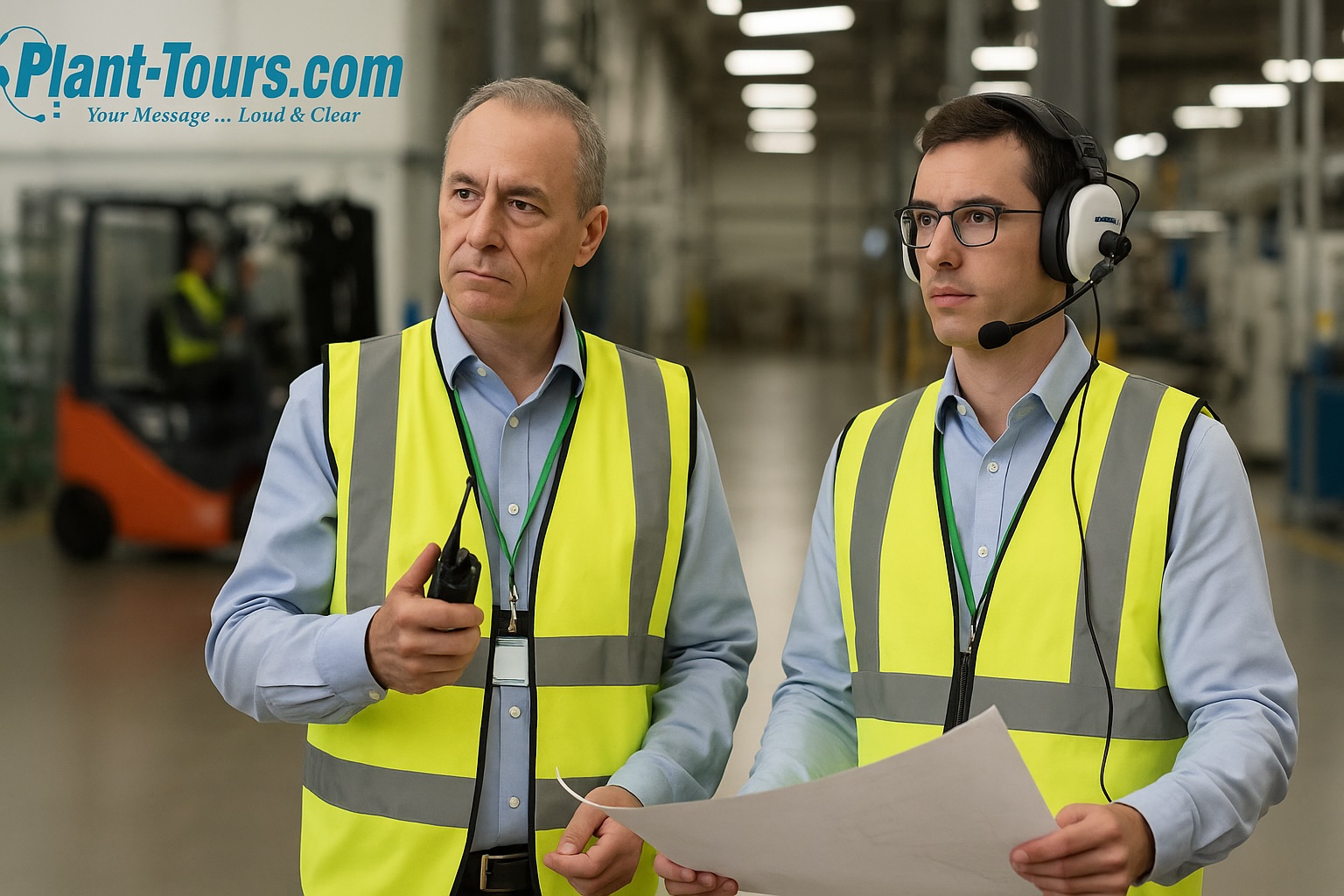Tips for Clear and Effective Communication on a Construction Job Site
Construction job sites are potentially dangerous places, accounting for more total workplace deaths than any other industry in the last 10 years. In addition, the Project Management Institute (PMI) reports that the main reason construction projects fail is poor communication. At PlantTours, we have seen first-hand how transparent and effective communication can improve safety and reduce costly mistakes and injuries. Simple steps like utilizing noise-reducing equipment and proper hearing protection to overcome noise caused by loud machinery have proven to be effective with our clients. As has encouraging open communication, along with regular training in radio communication rules and the use of communication equipment.
The tips provided in this article are derived from our own experience and from feedback from previous clients. The tips all address the critical point that in the high-risk environment of a construction site, effective communication is essential for enhancing safety and productivity. Although studies have shown that communication is fundamental to construction worker safety, feedback from our clients suggests that poor communication is still a common problem in the construction industry, so there remains room for improvement.
Understanding the Importance of Clear Communication on Job Sites
The construction industry has the dubious honor of having the most preventable fatal accidents of any sector in the USA. This sobering statistic highlights why training and good communication are essential for construction site workers. Effective two-way communication is vital to ensuring the well-being of construction workers, as a simple miscommunication in this dangerous construction environment can have severe or even fatal consequences. Embracing proper communication methods will enhance construction safety, boost productivity, and reduce delays and downtime, thereby cutting costs.
The most serious workplace injuries involve falls or being hit by objects. Construction work will include working at height, and sites will have many moving objects, so the potential of severe accidents is already high, and poor communication will make things worse. According to OSHA (Occupational Health and Safety Administration), the core elements of an effective safety and health program depend on good communication skills including active listening, and the right equipment.
Poor communication costs the industry billions every year, and to counteract these challenges, establishing a clear chain of communication with standard protocols is an essential first step. We have experienced many times that simple changes such as avoiding unnecessary jargon and providing regular workforce training, can enhance communication effectiveness and ensure construction projects run efficiently and safely.
Overcoming Communication Barriers Through Noise-Reducing Equipment
While training and language skills can significantly impact communication skills, the main problem many of our clients experience on construction sites is often excessive noise. Construction sites are often loud and chaotic, so it is challenging for workers to hear and understand each other clearly. To overcome noise challenges, consider implementing noise-reducing headsets for construction site communication.
Using noise-reducing headphones can mitigate the impact of noisy machinery and background noise, allowing for better communication and less distraction among team members. Modern communication equipment can significantly enhance safety by ensuring that essential instructions and warnings are heard accurately while improving productivity by reducing errors caused by miscommunication or distraction due to the noisy environment.
Tips for Good Communication on the Job Site
Good communication on the job site requires effectively utilizing technology, establishing clear protocols, regular training, and encouraging open communication with team feedback.

Utilizing Technology
Communication technology ensures smoother operations and increased safety for construction teams. Project management software and radio systems linked to noise-reducing headsets can streamline communication processes so that all workers promptly receive updates, warnings, and other essential information. By utilizing the right software and hardware solutions, clear communication is enabled among all stakeholders. Technology, including mobile devices and multi-channel radio systems, helps to keep everyone informed and connected so construction projects can progress efficiently, leading to a more productive and safer work environment.
Establishing Clear Protocols and Procedures
Effective communication technology adoption requires clear protocols and procedures so that all team members understand their roles and responsibilities. To establish clear workplace communication protocols on a construction site, the management team should:
-
- Define clear communication channels: Clearly detail who reports to whom in the chain of command to eliminate confusion and ensure accountability.
-
- Implement regular meetings: Weekly team meetings must be scheduled to discuss projects, updates, expectations, and problems.
-
- Encourage documentation: Team members should take notes during meetings and share them as a reference.
-
- Provide training: Regular training is required to keep employees updated on projects, job procedures, and safety regulations.
Encouraging Open Communication and Feedback
The management team needs to encourage open dialogue amongst team members to foster a culture of effective communication and feedback on the construction site through an agreed communication chain. A work environment where questions and feedback are welcomed boosts morale and trust while reducing miscommunication and confusion.

Understanding the Audience
One of the fundamental principles of effective communication is to tailor your messages to suit the needs of your audience. To better understand and communicate with your audience, there are four main strategies:
-
- Know Your Audience: Understand their background, education level, expertise, and be aware of language barriers and preferred communication styles.
-
- Keep it simple: Avoid technical jargon or overly complex terms, as these are rarely necessary and can confuse your audience.
-
- Listen Actively: Pay attention to nonverbal communication such as body language, eye contact, and other audience cues to confirm your message is being understood.
-
- Provide Context: An audience will find it easier to grasp the significance of the information if you include relevant background, explanations, or anecdotes.
Provide Regular Training
Regular employee training is essential to maintaining up-to-date knowledge and skills for peak job performance. Providing regular face-to-face training also gives managers a chance to confirm that team members are well-equipped to handle on-site tasks efficiently and safely. Investing in training enhances employee satisfaction while keeping staff informed about new regulations, safety protocols, project information, and new equipment procedures. Additionally, ongoing training encourages professional development, making employees feel more engaged and committed.
Avoid Unnecessary Jargon
One of the most common problems we have seen with construction company clients is using unnecessary jargon. This can create misunderstandings as workers need to understand each other clearly. The use of jargon needs to be kept to a minimum, especially when there are many different tradespeople and subcontractors from various companies working on the same construction site, and each has its unique jargon. For example, a general contractor could hear a supervisor’s instruction to “secure the beam” and understand that means simply fixing it in place with temporary supports. However, the actual intention from the supervisor could be to complete the installation of the beam.
This type of simple communication mistake is responsible for many accidents and expensive delays. So, if you feel that specific jargon terms are necessary, they should be written down, so all employees and visitors understand and use the same terms. Hold regular meetings and define and explain essential terms so workers stay informed and understand their roles. On construction jobs it’s important to note that English is not always the first language. So, promote clear and straightforward language in all verbal and written communication whenever possible.
Conclusion
Effective jobsite communication enhances safety, productivity, and overall success on construction sites. Following the tips in this article, you can build trust and create a work environment where the team’s communication is more precise and effective, leading to better outcomes for employees and the business. Communication isn’t just about talking but also about actively listening and understanding. The main takeaways to enhance communication on your construction job site are establishing clear communication lines, creating an environment where all stakeholders feel comfortable asking questions, sharing real-time updates, and voicing concerns. Adopt communication technology to counter high noise levels and train staff in their proper use and emphasize avoiding unnecessary jargon.







